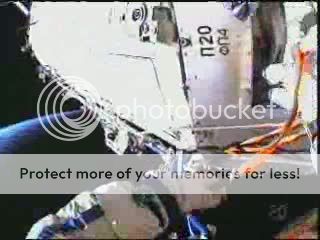E
EarthlingX
Guest
http://www.physorg.com : International Space Station to manoeuvre to dodge debris
http://www.nasa.gov : Crew Prepares for Progress 40, Space Shuttle Discovery
October 26, 2010
The Russian mission control centre has decided to manoeuvre the International Space Station (ISS) on Tuesday to avoid collision with space debris, Russian news agencies reported.
"A decision has been taken to correct the flight orbit of the ISS. The engines will be switched on at 1425 Moscow time (1025 GMT)," a spokesman for the mission control centre outside Moscow told the RIA Novosti news agency.
The space station would take 180 seconds to manoeuvre to an orbit around 500 metres higher than its current one, the spokesman told the agency.
The mission control centre said earlier that the fragment of space debris of unknown origin was extremely unlikely to collide with the ISS, with experts calculating around a 0.001 percent chance of a direct hit.
The last time that the ISS passed close to space debris was in July, when it passed fragments of a Chinese weather satellite around eight kilometres (five miles) away.
The crew on board, three NASA astronauts and three Russian cosmonauts, were not to take part in the manoeuvre.
(c) 2010 AFP
http://www.nasa.gov : Crew Prepares for Progress 40, Space Shuttle Discovery
...
Image above: Expedition 25 Commander Doug Wheelock (left) and Flight Engineer Scott Kelly prepare the Simplified Aid for EVA Rescue backpacks for use during the STS-133 space shuttle mission. Credit: NASA TV
The ISS Progress 37 cargo craft successfully undocked from the International Space Station’s Pirs docking compartment Monday at 10:25 a.m. EDT. The Progress will spend three weeks orbiting a safe distance from the station to enable Russian engineers to conduct technology experiments before being deorbited Nov. 15.
The undocking of Progress 37 sets the stage for the launch of the ISS Progress 40 cargo ship Wednesday from the Baikonur Cosmodrome in Kazakhstan. The new Progress is loaded with 1,918 pounds of propellant, 1,100 pounds of oxygen, 498 pounds of water and 2,804 pounds of food, spare parts and supplies for the Expedition 25 crew. It will dock to the station’s Pirs docking compartment Saturday.
To prepare for the arrival of Progress 40, Expedition 25 Flight Engineers Alexander Kaleri and Oleg Skripochka reviewed procedures for the use of TORU, the Russian telerobotically operated rendezvous system. The crew can use TORU to monitor the docking of a Progress cargo craft with the station or take control of the process if difficulties arise.
Commander Doug Wheelock and Flight Engineer Scott Kelly prepared tools and checked out the Simplified Aid for EVA Rescue (SAFER) backpack units that will be used during two spacewalks to be performed by STS-133 Mission Specialists Tim Kopra and Alvin Drew. If a spacewalker should become untethered and float away, he or she can control the SAFER unit’s nitrogen-jet thrusters with a joystick to move back to safety.
Space shuttle Discovery will launch Nov. 1 to begin the STS-133 mission to the space station. On the orbiter’s final spaceflight, the crew members will install the Permanent Multipurpose Module and deliver important spare parts to the station along with the Express Logistics Carrier-4 and Robonaut 2.
Flight Engineer Shannon Walker worked with the Health Maintenance System performing pressure measurements with a new tonometer on the system’s Eye Simulator. The measurements will be used to verify the tonometer’s functionality in the microgravity environment of space.
Flight Engineer Fyodor Yurchikhin inspected filters in the Russian Elektron oxygen generation system.










































